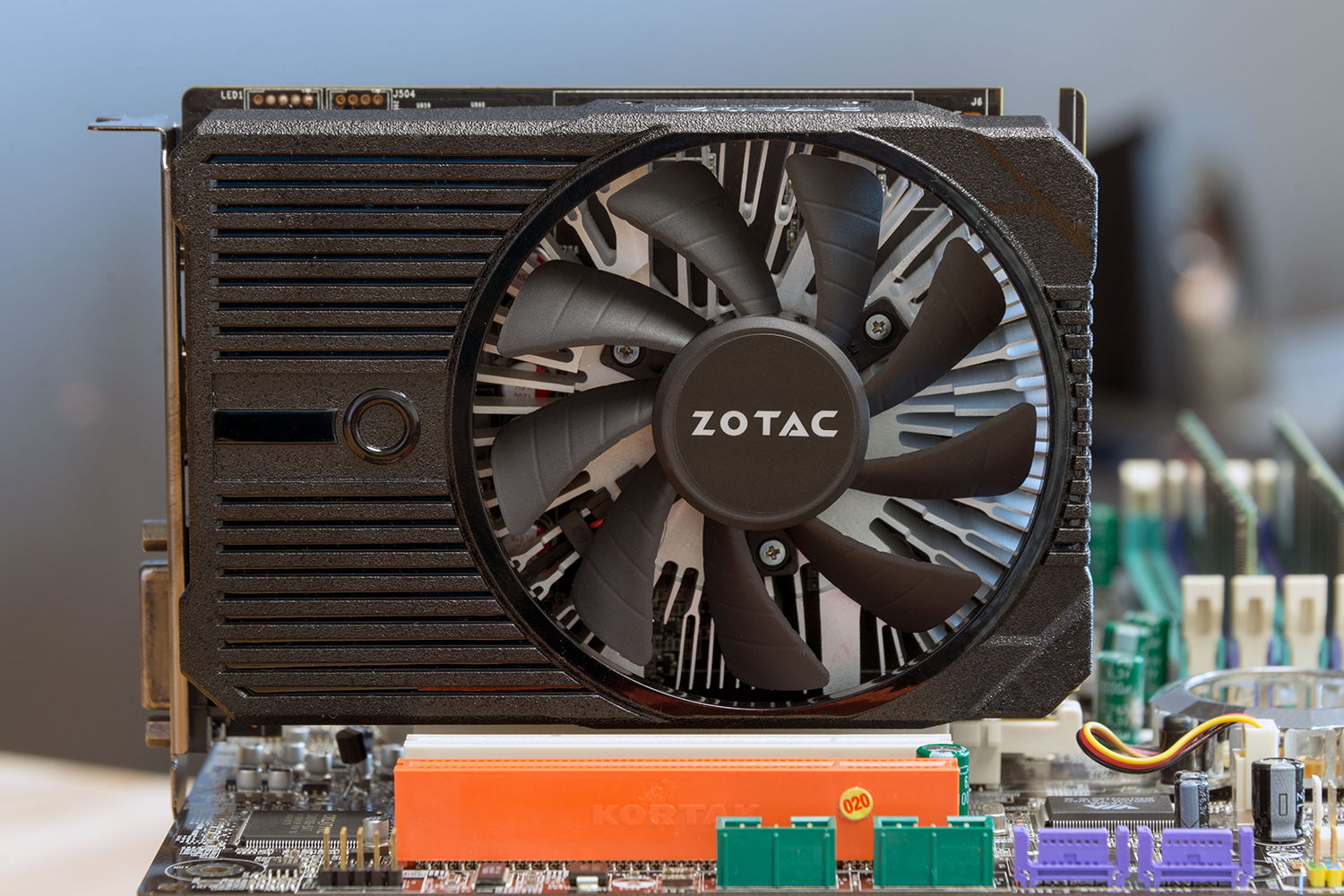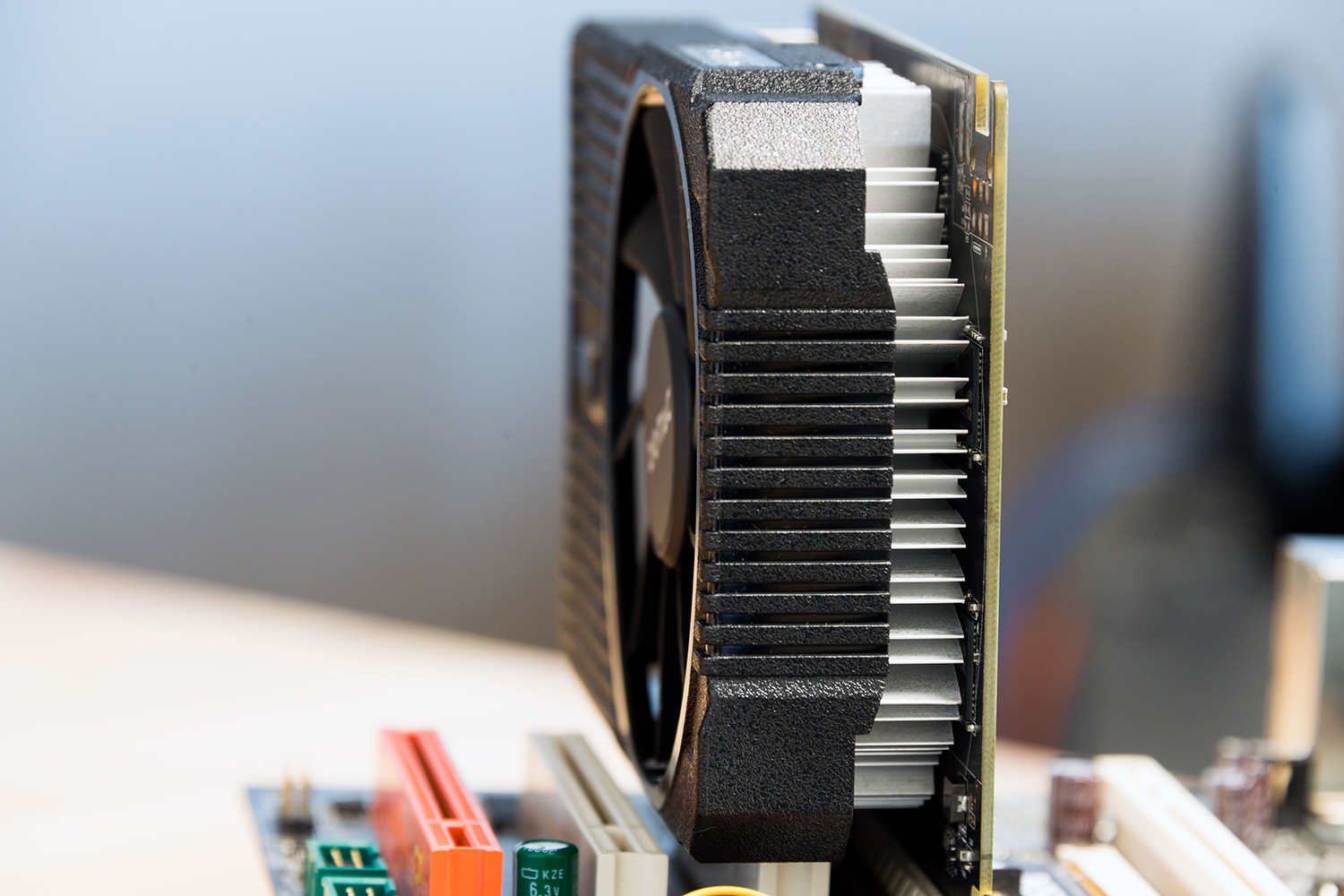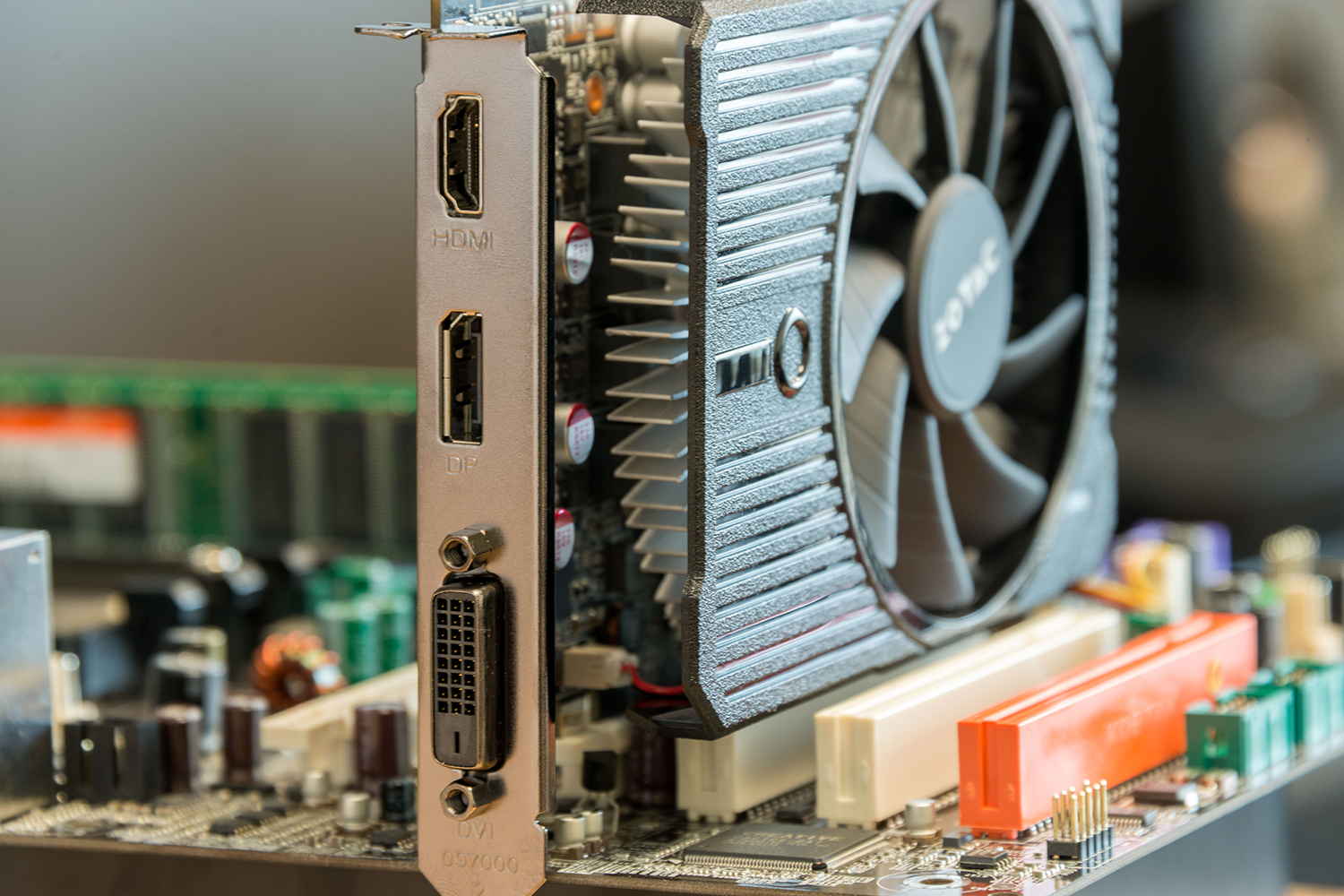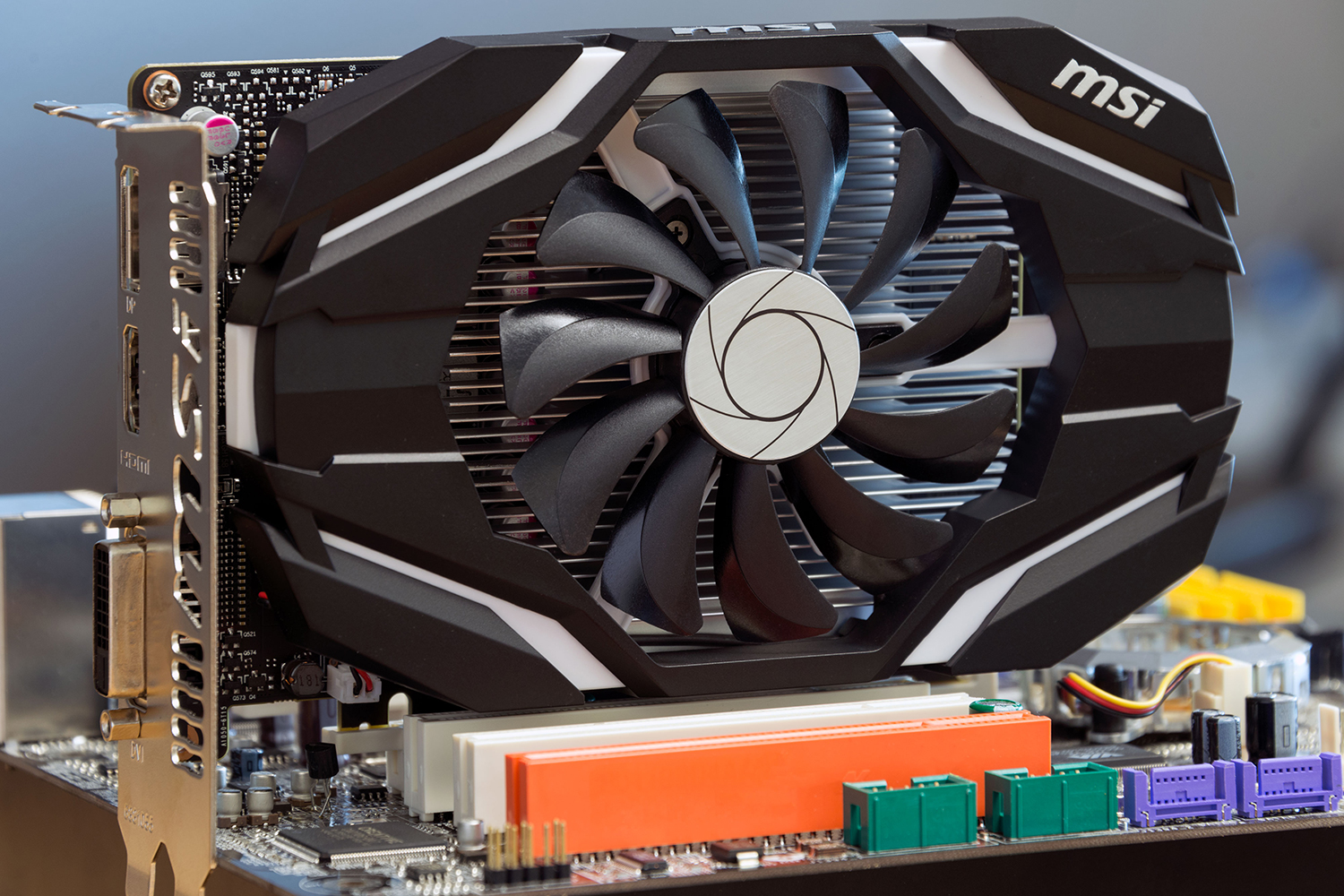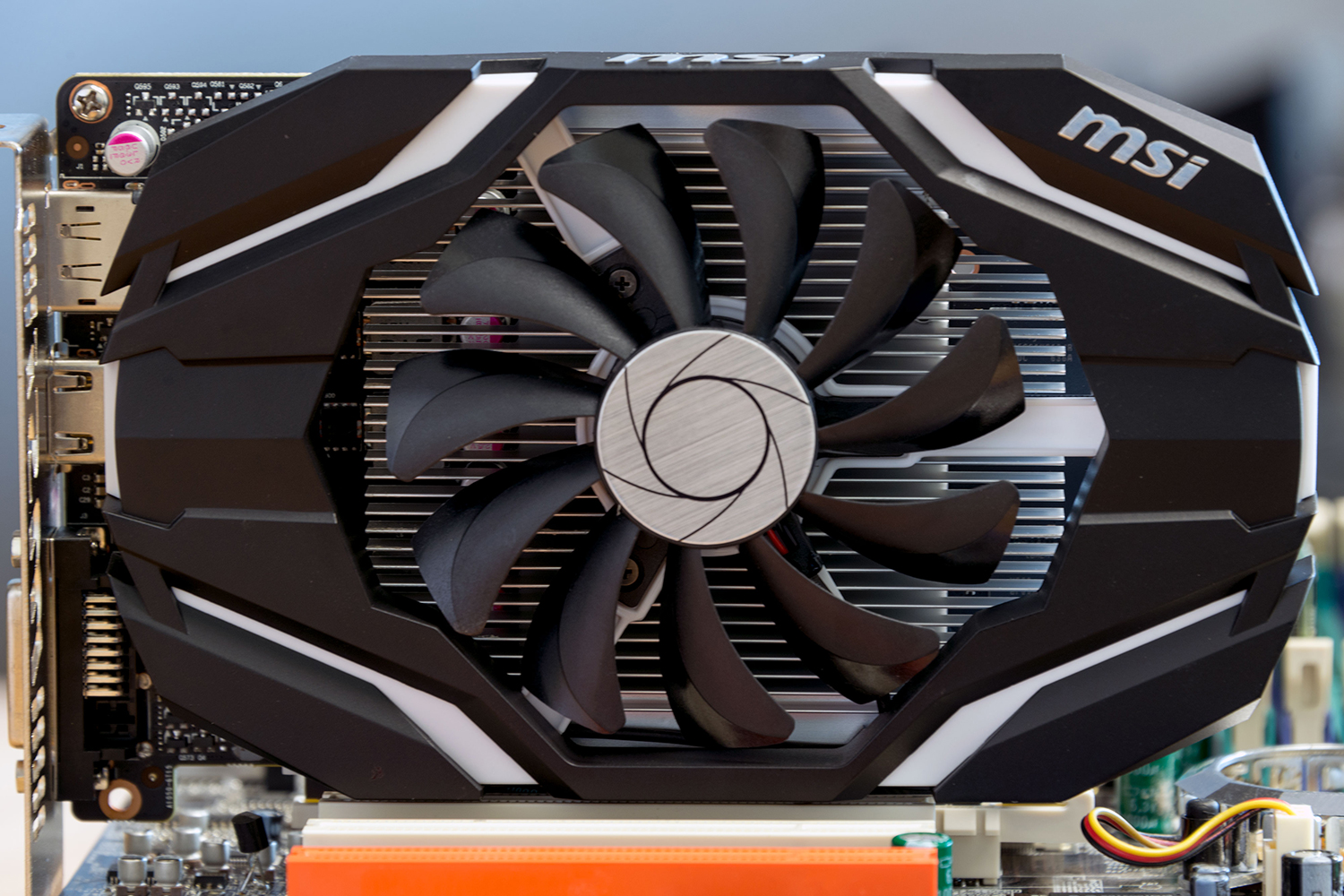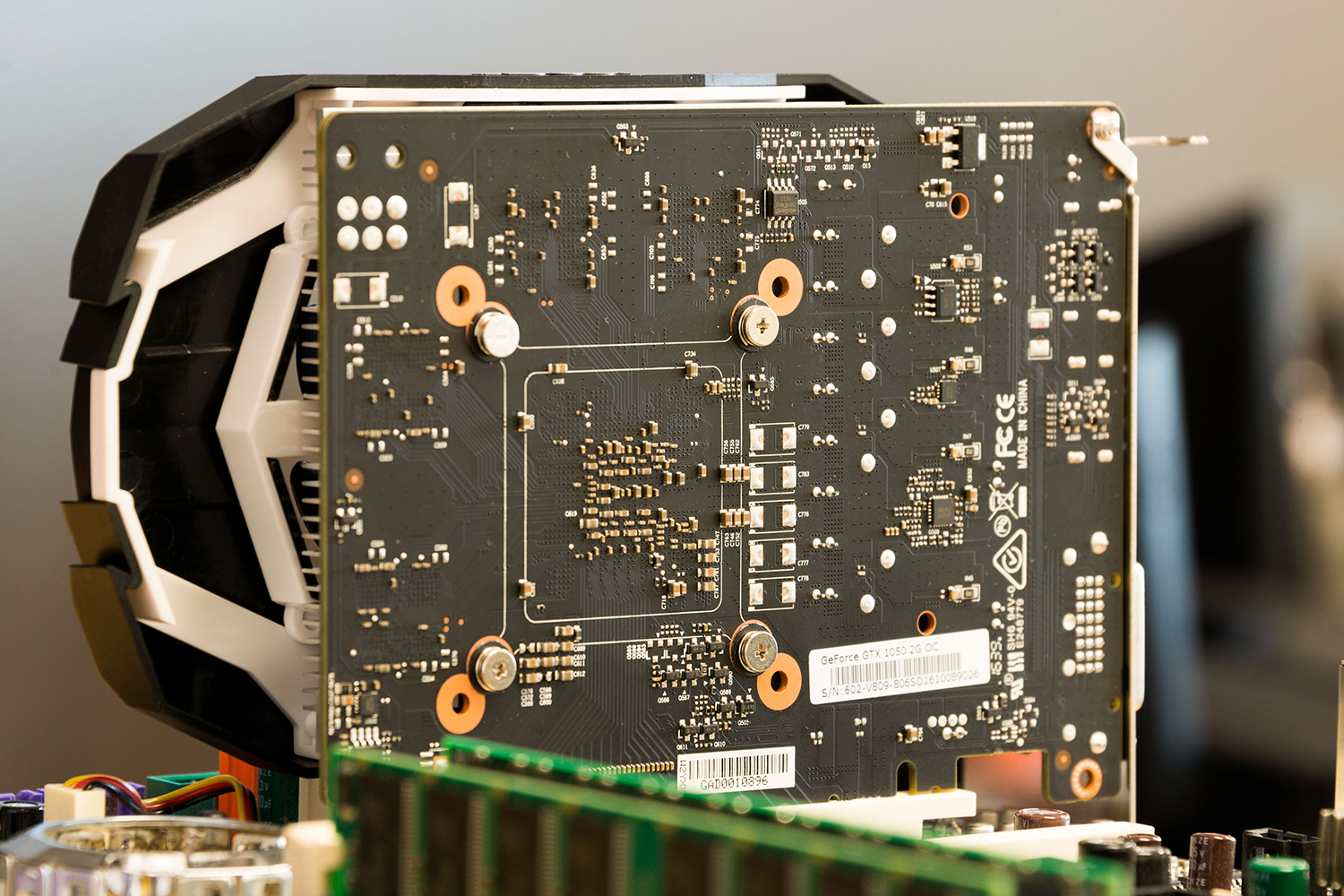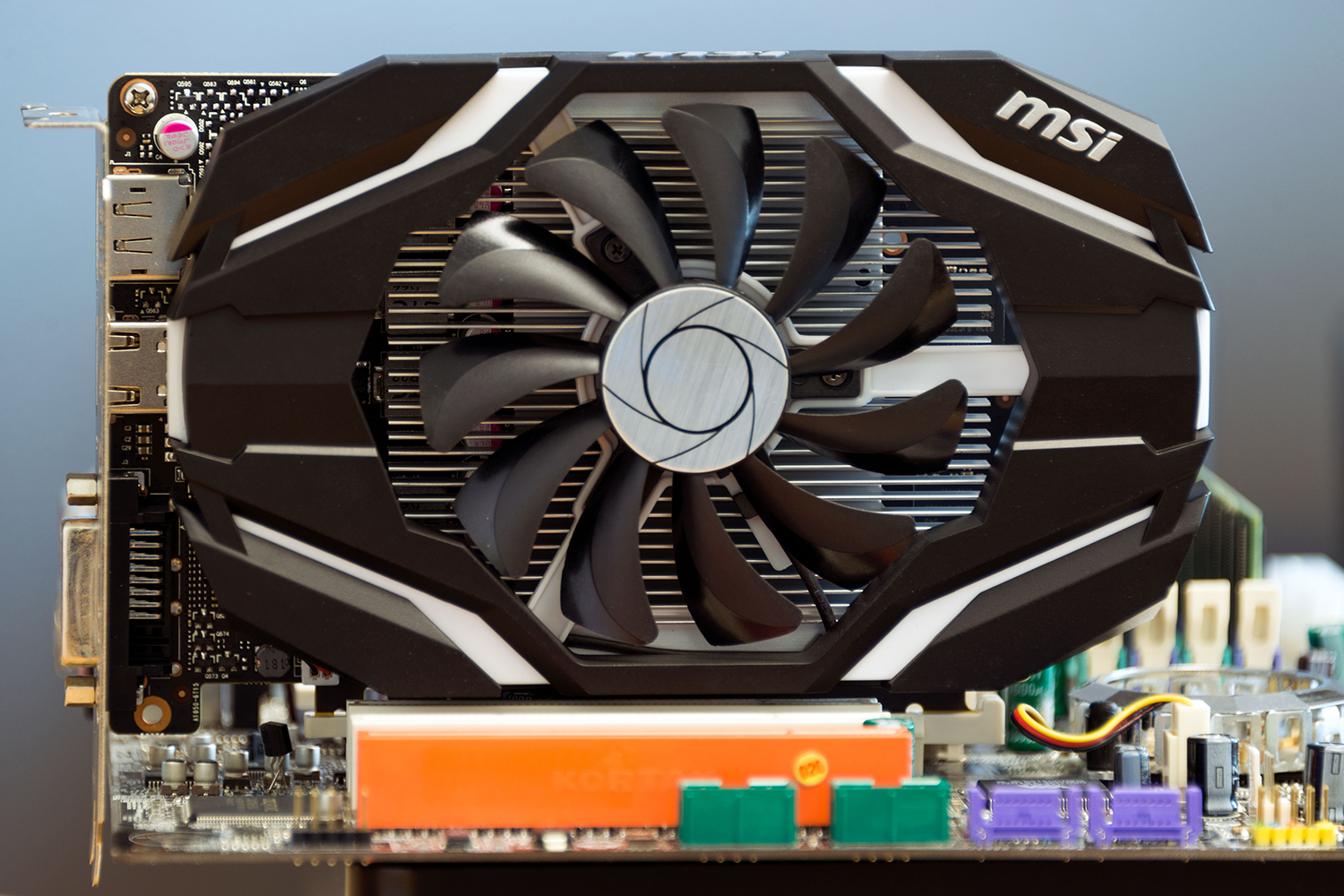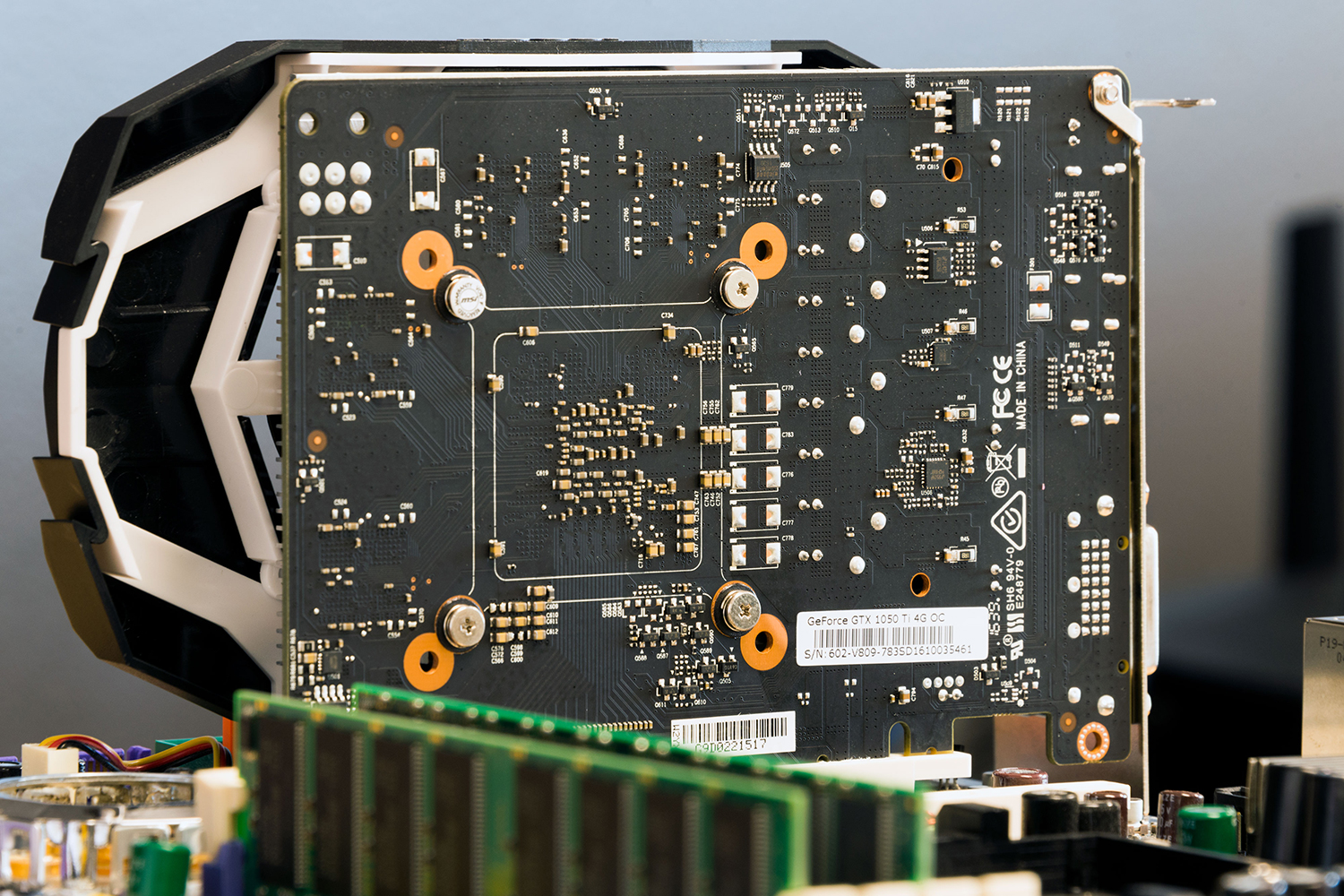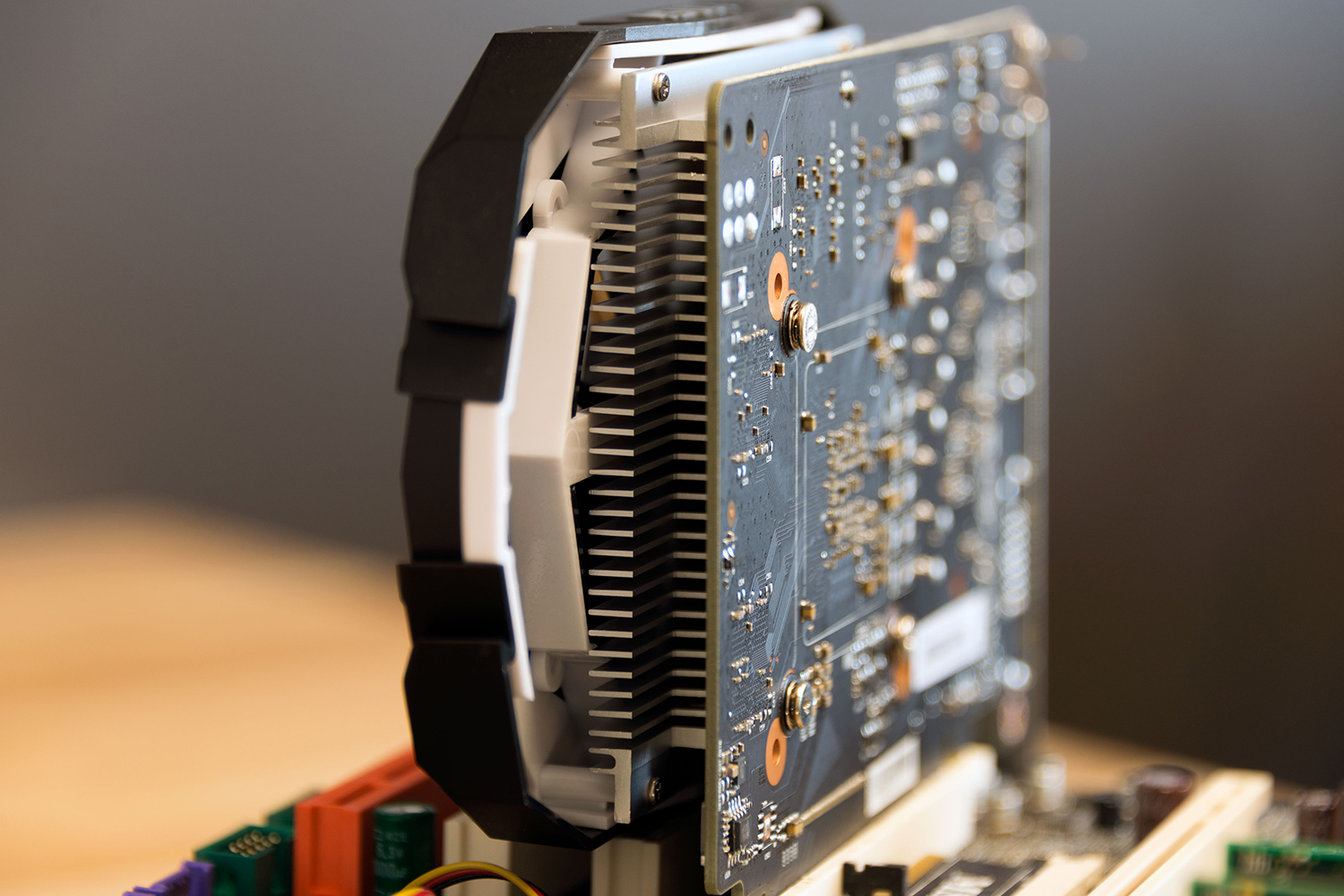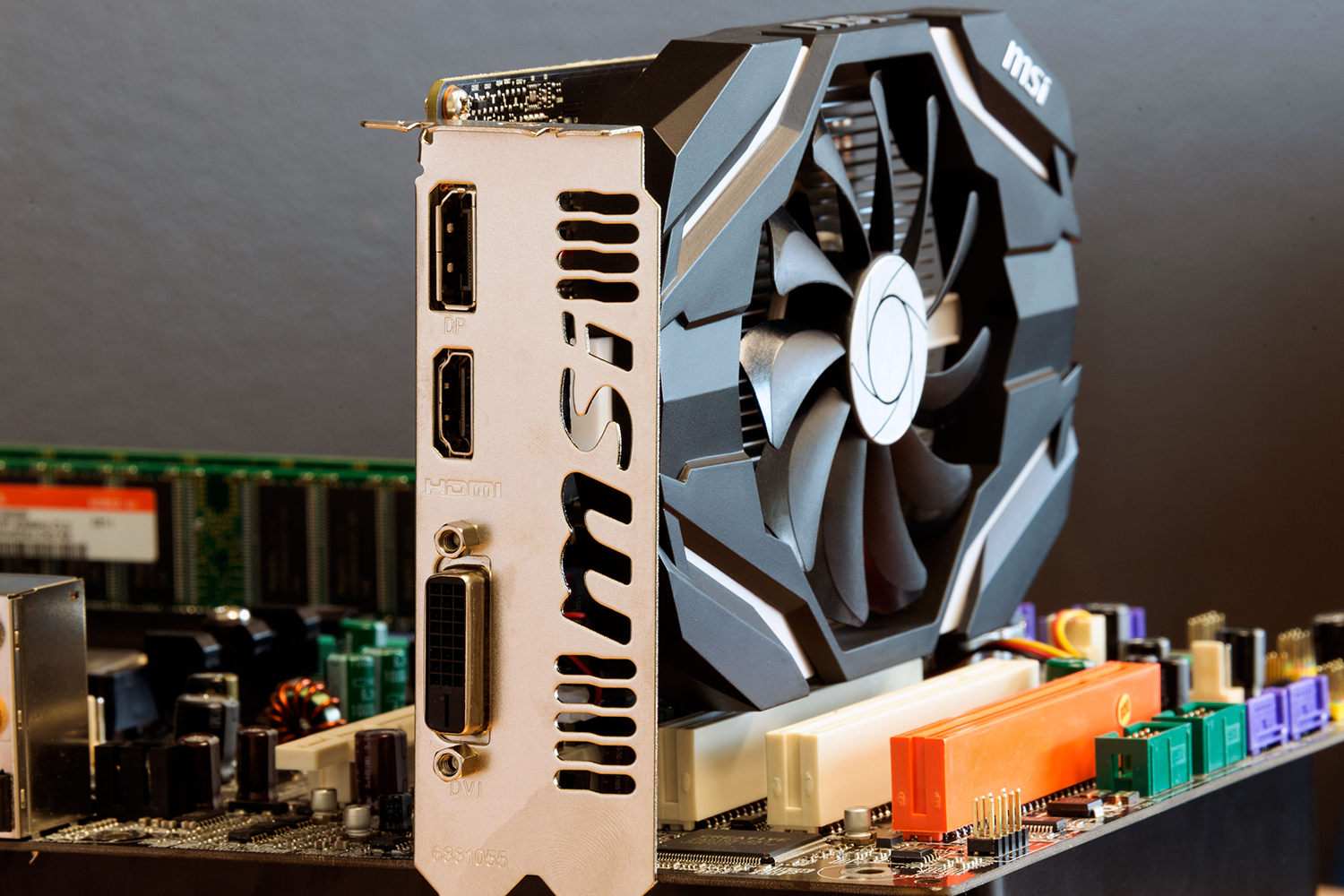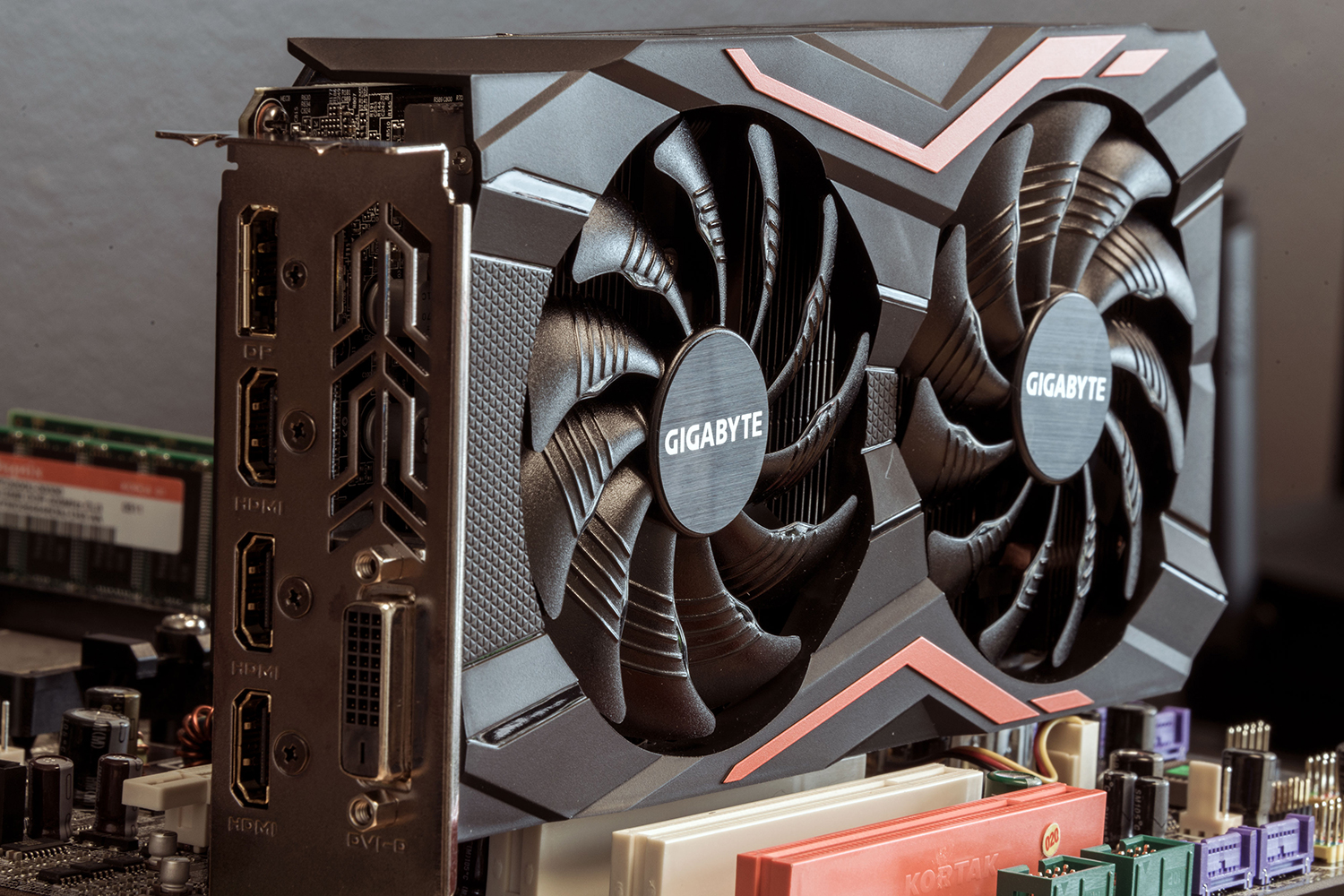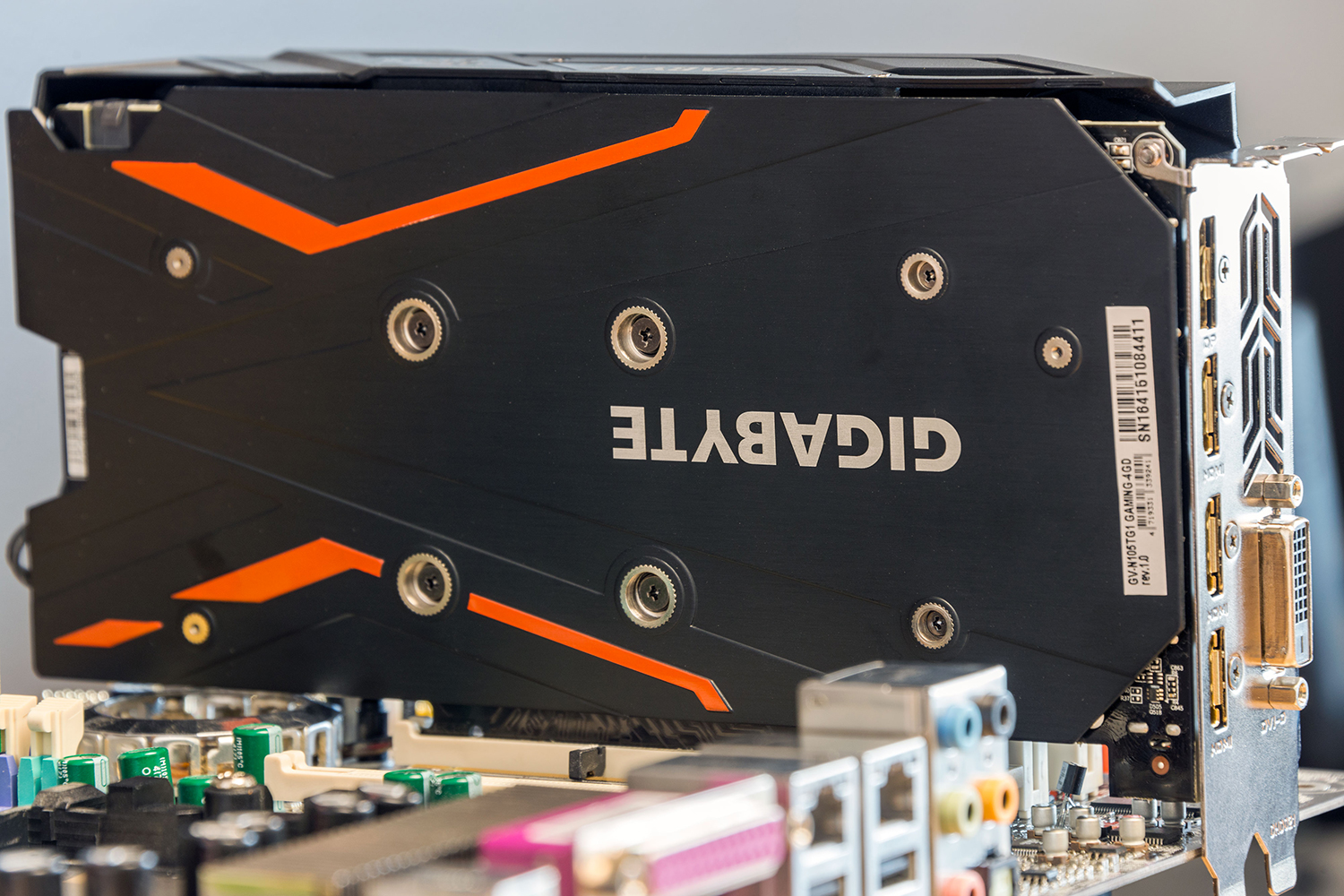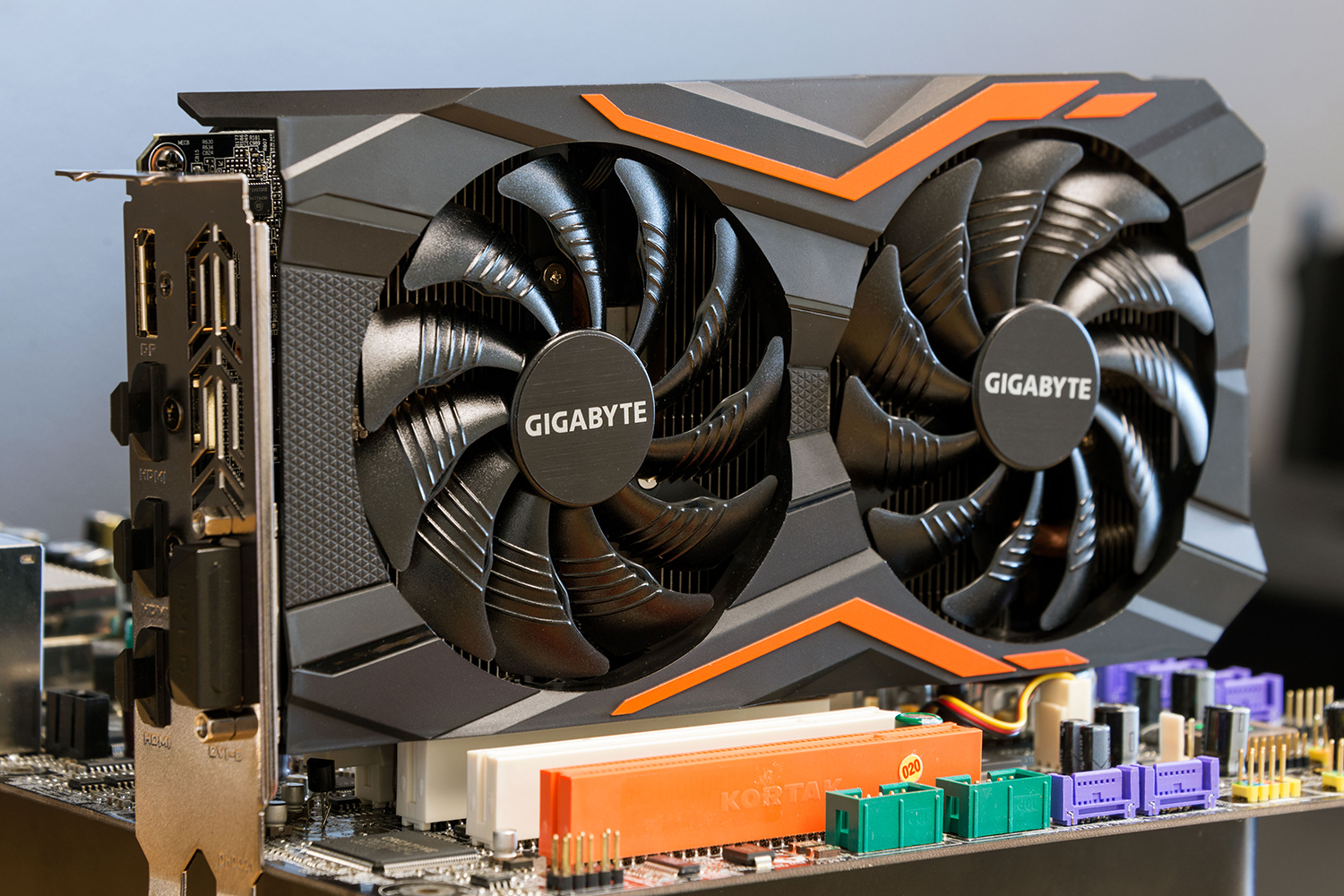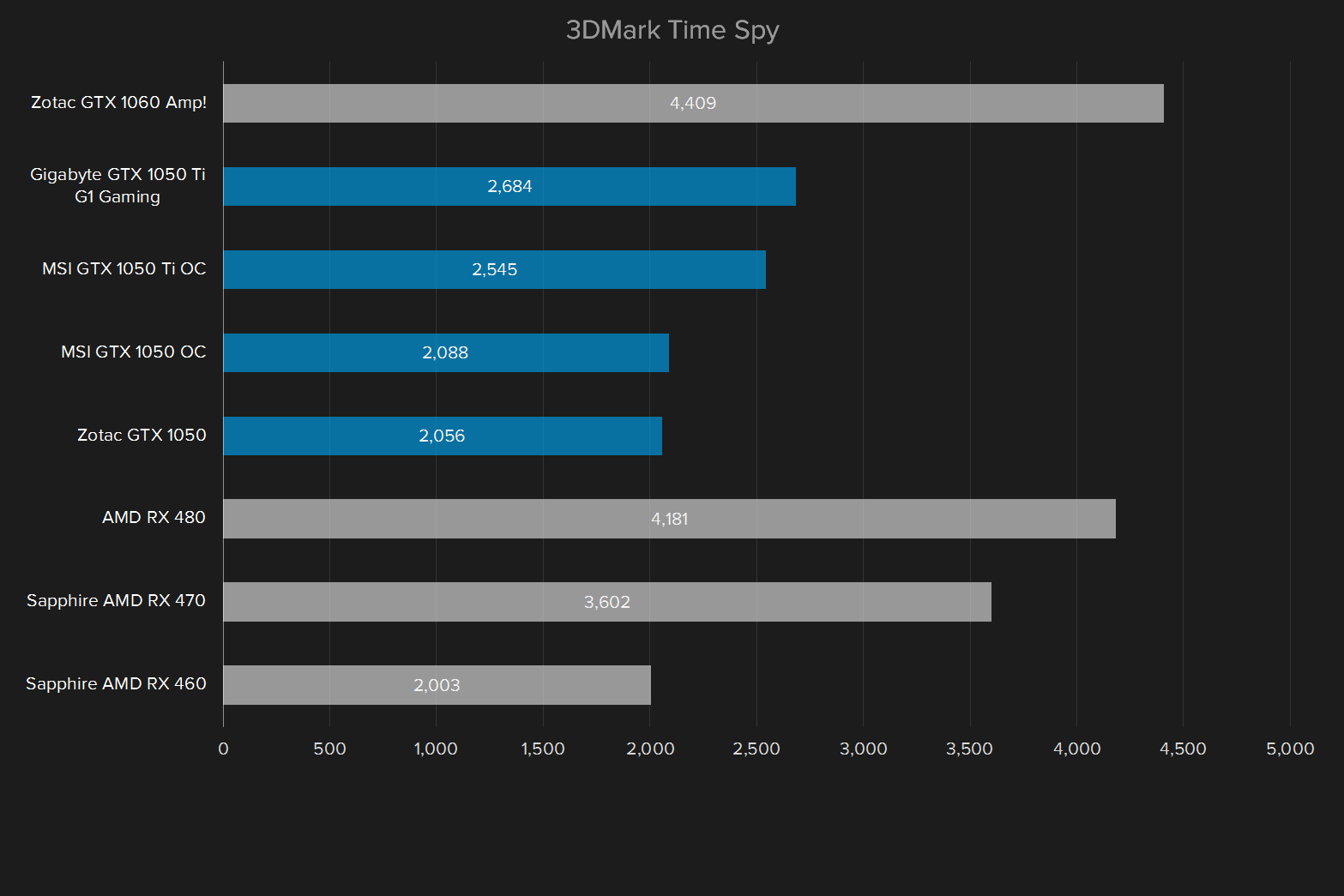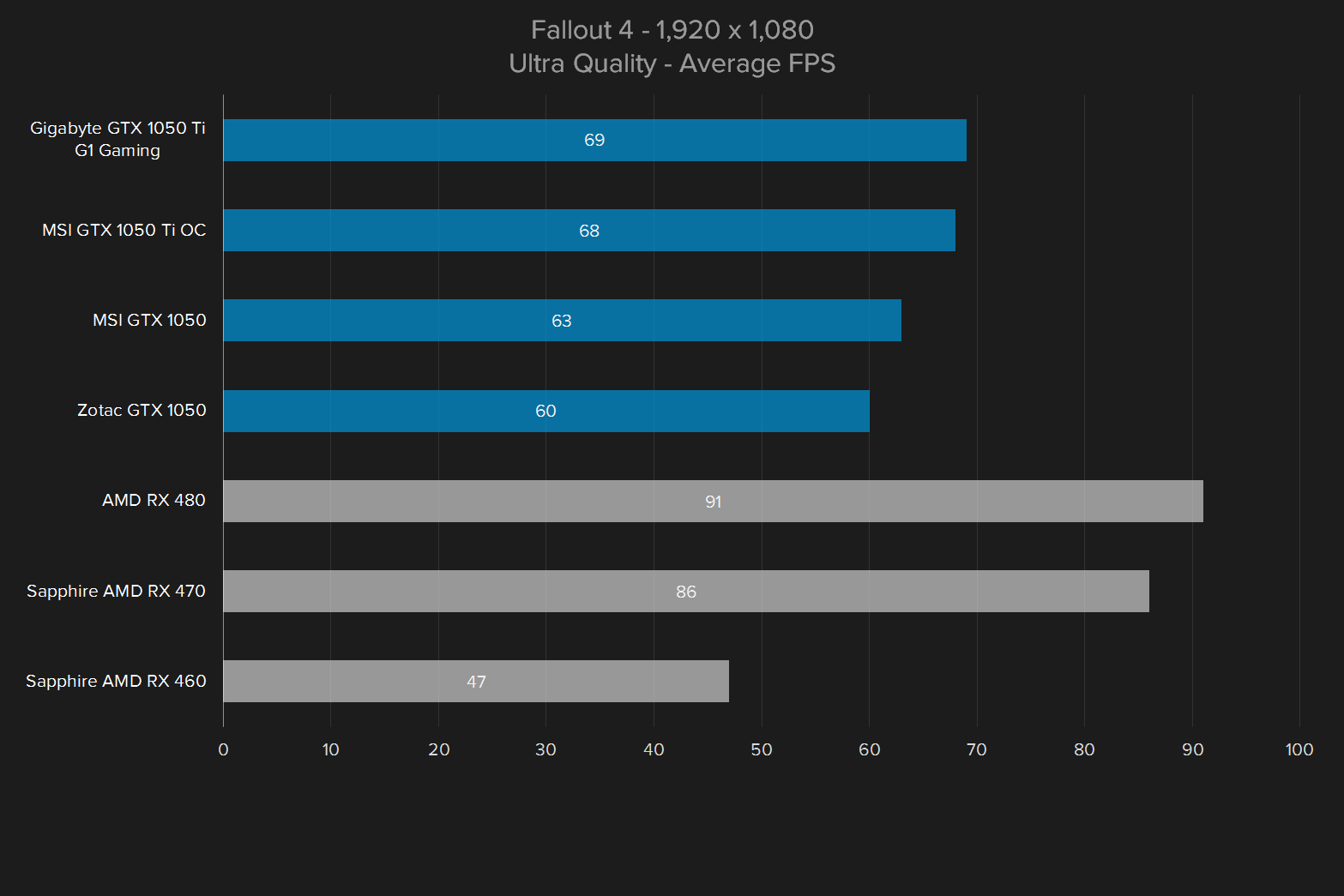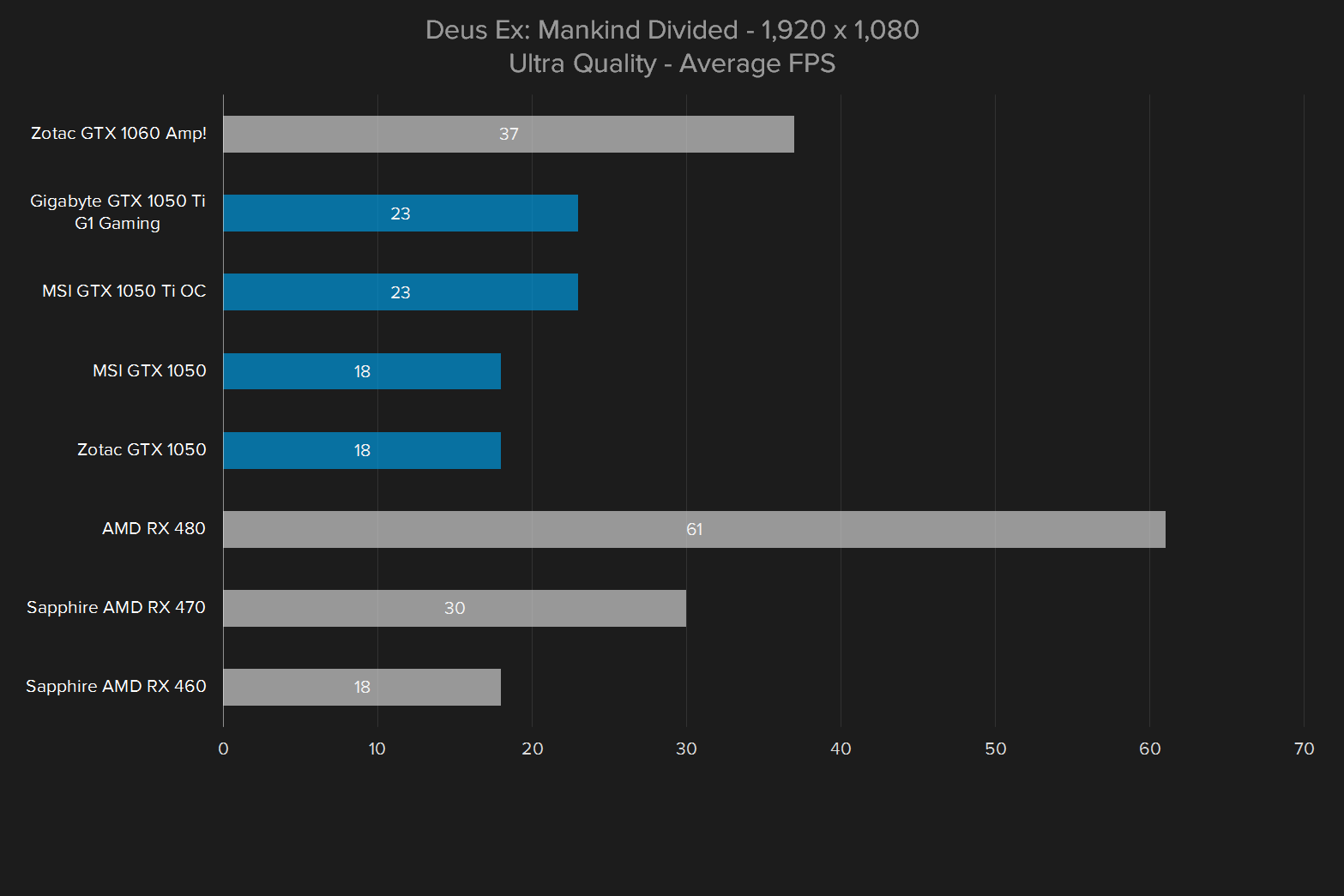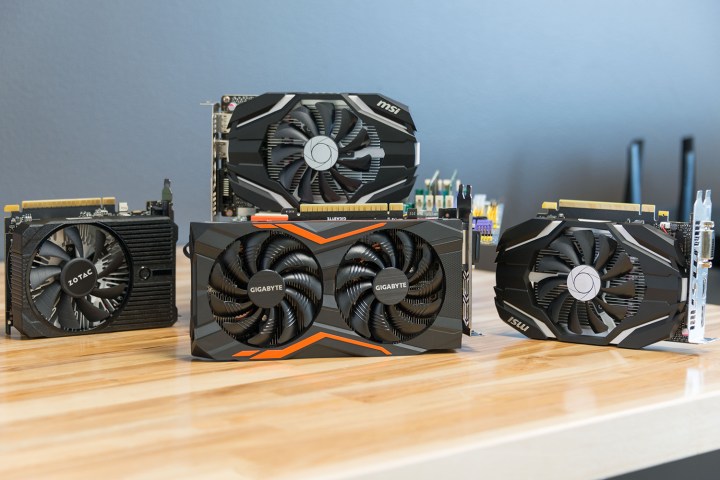
Highs
- Solid 1080p performance
- Budget-friendly price point
- Low power requirements
Lows
- Limited connectivity
- Pricey variants quickly lose appeal
How does it perform?
That’s the biggest question on any PC gamer’s mind when a new graphics cards hits store, especially if you’re currently rocking a card that can barely power Stardew Valley. Nvidia’s new GTX 1050 and 1050 Ti both slide onto shelves starting around $115 and $140 respectively, which should please anyone gaming on a budget. However, during our GTX 1050 and 1050 Ti reviews we realized there was more to these cards than their budget price tags.
Nvidia is running things differently with the GTX 1050 Ti release than it did with the GTX 1070 and 1080. There’s no Founders Edition, and instead all versions of the card will be produced by board partners. Since that’s the case, we rounded up a few versions of the card from Gigabyte, MSI, and Zotac. Does the new mid-range GeForce card stand up on its own, or should you save up for something heftier?
Budget cards with the latest hardware
The GTX 1050 and 1050 Ti are the least expensive cards yet produced on Nvidia’s new Pascal architecture. We’ve previously seen it in the GTX 1080, 1070, and 1060, all of which are more significantly more expensive. It’s likely that the GTX 1050 will be the least expensive card with Pascal for the duration of the architecture’s life.
Low power draw is good news for compact system builders.
Pascal’s headline improvement is the move to a more efficient, 16-nanometer production process. The upshot is power consumption which, in the case of these entry-level cards, has a dramatic impact. These cards all sport a 75-watt thermal design power, allowing them to theoretically pull all the power they need through a PCI Express 16x connection, ditching the need for additional power from your rig’s power supply. This is extremely unusual. Cards that lack an external power source rarely prove quick enough for hardcore, or even casual, gamers.
Technically, board partners have the option of adding external power back to the card, a move that might improve the card’s overclocking potential. However, only one of our four review units took this option. That’s good news if you have a small system, or a modest power supply.
As said, we tested not one but four cards for this comparison. Let’s have a look at the combatants.
Zotac GTX 1050
We’ll start with our most basic review unit, a Zotac card with no external power and a single fan. It’s sitting at the card’s stock clock speeds with a 1,354MHz base clock, and up to 1,455MHz boost clock. Like the other cards in our test lineup, the memory is sitting at the stock 3,504MHz stock speed.
Its fitted with a familiar Zotac cooler and a sizable fan, although the plastic isn’t as sturdy as the other cards in our test suite. There’s no back plate, and the only available ports are Nvidia’s standard offerings: one DisplayPort, one HDMI, and one DVI. We would’ve liked to see two of either DisplayPort or HDMI, for hooking up identical displays, but the slim configuration likely won’t cause problems for most of the users the card would appeal to. We haven’t heard a definitive price point yet, but we expect barebones cards like this to fall right at the suggested retail – $110.
MSI GTX 1050 OC Edition
Our other GTX 1050 review unit is the MSI OC edition, with a modest base overclock from 1,354MHz to 1,405MHz, and a boost overclock from 1,455MHz to 1,519MHz.
Its design closely resembles the Zotac, with a small, single-fan cooling shroud that doesn’t quite reach either end of the card. The PCB is just six inches long on its own, and the cooler adds just over an inch, so it’s compact enough to fit into even pre-built or compact systems.
Once again, we’re limited to just one of each of the major digital video outputs, which is made up for by the MSI’s $110 retail price. That matches Nvidia’s suggested starting price for the card.
MSI GTX 1050 Ti OC Edition
MSI also provided one of our GTX 1050 Ti review units, another OC edition. with the same PCB footprint, cooling, and power as the GTX 1050. Interestingly, this card’s base and boost speeds have been overclocked to the standard GTX 1050’s clock speeds, 1,354MHz and 1,454MHz respectively. Once again, memory speeds are unchanged.
Like the MSI GTX 1050, the 1050 Ti has the stock selection of video outputs. That means one HDMI, one DisplayPort, and one DVI. Once again, it would have been nice to see at least two DisplayPort, but none of the other cards we tested can boast that feature. At just $140, this GTX 1050 Ti is also sitting at Nvidia’s base suggested retail price.
Gigabyte GTX 1050 Ti G1 Gaming 4G
We also have the Gigabyte G1 Gaming GTX 1050 Ti. It’s covered in a fairly thick shroud, with two Windforce fans that will be familiar to Gigabyte owners. There’s a back plate on this one, which is a nice touch considering the card’s budget-friendly price point. Unlike the others, connectivity includes three HDMI with one DisplayPort.
Gigabyte has overclocked the GPU under the G1 Gaming’s hood, pushing the base clock up to 1,367MHz, and the boost clock to 1,481MHz, while leaving the memory clock at the 3,504MHz stock speed. These speeds slightly exceed the MSI, though only by a small fraction.
There are other bells and whistles packed in. The Windforce logo that points out from the side is backed with RGB LEDs, as is the text that indicates the fans have come to a stop when usage is low enough to cut them. At $170, the Gigabyte offering is slightly above the base price for the card, and puts it in competition with the Radeon RX570 which retails for $190 to $200 — or it should, but shortages have inflated the price to around twice that.
Performance
Because we had a lot of cards to test, and not a lot of time to do it, we decided to focus on a few key titles and performance benchmarks.
We’ll be comparing all four GTX 1050 and 1050 Ti cards to the Zotac GTX 1060 Amp! we recently reviewed, as well as the reference AMD Radeon RX 480, a Sapphire Radeon RX 470, and a Sapphire Radeon RX 460. These cards all fall right around the same price range and target audience.
First up, the 3DMark synthetic benchmarks should give us a solid idea of how these GPUs perform against each other in a controlled setting.
Both GTX 1050 Ti models experience about a 25 percent jump in performance over the GTX 1050 in the new DirectX 12 Time Spy test. The difference isn’t as stark as it is in the older DirectX 11 tests, Fire Strike and Sky Diver, where the lower end cards only see about a 10 percent boost to performance.
It also gives us our first idea of where these cards fall in relation to the AMD offerings. The AMD RX 460 and GTX 1050 fall within a few percentage points of each other, with the Nvidia options taking a more pronounced lead in the non-DX12 tests.
The RX 470, on the other hand, clobbers the slightly cheaper GTX 1050 Ti. It does so by just about 20 percent in Fire Strike and Sky Diver, and about 26 percent in Time Spy. The RX 570 also widened that gap a bit, beating the GTX 1050 Ti by about 35 percent in Fire Strike and about 40 percent in Time Spy. We’ll have to wait and see how that translates to actual gaming benchmarks.
After taking the cards out for a spin in the real world, things are starting to look a lot stickier. Let’s start with the GTX 1050s. These cards take a definitive lead over the RX 460’s performance, particularly when you take into account our RX 460 review unit cost $140 at the time of review, and relied on an external power source for its overclock, something neither of our 1050 review units require. Clearly baseline performance is strong for the GTX 1050, as long as you don’t mind letting your settings slide a bit.
The GTX 1050 Ti does manage to hit our 60 frame per second goal in both Fallout 4 and Battlefield 1, while the standard GTX 1050 only does in the latter. Granted, that’s at each game’s Ultra detail preset. Dropping the quality would easily bring those cards in line with where we expect performance to land.
The Radeon RX 570 outperformed the GTX 1050 Ti in gameplay tests as well, hitting a comfortable 89 FPS in Battlefield 1 and 44 FPS in Deus Ex: Mankind Divided, at ultra high graphics settings in both games.
As we’ve seen before, the AMD cards take a strong lead over the Nvidia cards in Deus Ex: Mankind Divided. Whether that’s due to driver optimization or the hardware used to test the game initially is unclear, but it does bode well for more demanding games coming down the pipeline.
Warranty
Because Nvidia isn’t offering a reference version of the GTX 1050 or GTX 1050 Ti, there’s no hard and fast rule about warranties. The board partner you buy from will dictate how long the warranty covers the card, as well as details like which party covers RMA shipping, and whether taking the included cooler off is allowed under the terms of the warranty.
Our take
The long-rumored GTX 1050 and 1050 Ti are finally here, and they help fill out the green team’s budget range. These cards strike at the same market AMD targeted with the RX lineup. But this time around, Nvidia is facing tougher competition from the red team, and it’s starting to show.
Is there a better alternative?
There’s no shortage of alternatives in the budget-friendly graphics card space, but the RX 470 in particular stands out as a strong competitor to the GTX 1050 Ti. For a little less than 20 percent more, you’ll get at least 20 percent stronger performance in a number of games, often boosting frame rates from just over the 60 FPS mark, up to 80 or higher. That will be of particular importance to users with 75Hz or higher 1080p screens.
The GTX 1050 is almost perfectly matched with the RX 460, so the decision there is more difficult. The RX 460 has the advantage of time on the market, at least when this review is published, so expect to see slightly better pricing on those for the first month or two.
Otherwise, it comes down to whether you currently own, or are thinking of purchasing, a monitor with adaptive refresh. Nvidia’s G-Sync tends to add $100-200 to the cost of a monitor, while AMD’s FreeSync is sometimes found as a throw-in that doesn’t raise the price.
How long will it last?
While this is a new generation cards that should provide a solid feature set for at least a few years, many users may find performance lacking if they move on from 1,920 x 1,080 displays. Even the overclocked GTX 1050 Ti options aren’t prepared for anything but casual gaming at 2,560 x 1,440. We’ve seen a lot of users looking to replace a GPU after around two years, and these will only last that long if you don’t buy every new game, and you don’t plan on a monitor upgrade in that time.
Should you buy one?
Yes, for most gamers on a budget, the GTX 1050 is the right choice. If you have $100 burning a hole in your pocket, and you want to upgrade an existing pre-built rig, or work a modest GPU into a compact build, the GTX 1050 presents a better value than AMD’s RX 460 at the same price point. Even with the RX 460 dropping to $100 or less, the GTX 1050 still holds and edge, and at $140, our RX 460 review unit is priced with the entry level GTX 1050 Tis, which beat it out handily.
The GTX 1050 Ti isn’t as clear cut. The performance per dollar closely matches the RX 470, but as premium features and overclocking are added, so does the price. The Gigabyte G1 Gaming card, our favorite from the bunch, retails for $170. The Sapphire Radeon RX 470 carries a lot of the same features, with better connectivity, increased performance, and is was available for just $190 — until shortages caused the price to skyrocket. The more basic GTX 1050 Ti from MSI still has a slight overclock, but doesn’t require extra power, and sits at just $140. The value there is better, but it’s still not a clear victory for either side.
So which card should you buy? If you’re gaming at 1080p and need a simple, easy-to-install upgrade, the GTX 1050 is a good entry point. The basic $109 versions perform well for their price, defeating the AMD Radeon RX 460 in most situations. If you’re looking to spend more than that, the GTX 1050 Ti is not a bad option — but, we think that if you’re looking at something around $150, you’re better off saving another $50 for a GTX 1060 or RX 570 — if you can find one close to its MSRP of $200. These cards are clearly much, much faster than the GTX 1050 or 1050 Ti and the price gap is less than the cost of a full-price game.
Updated 7-27-2017 to reflect pricing changes.

